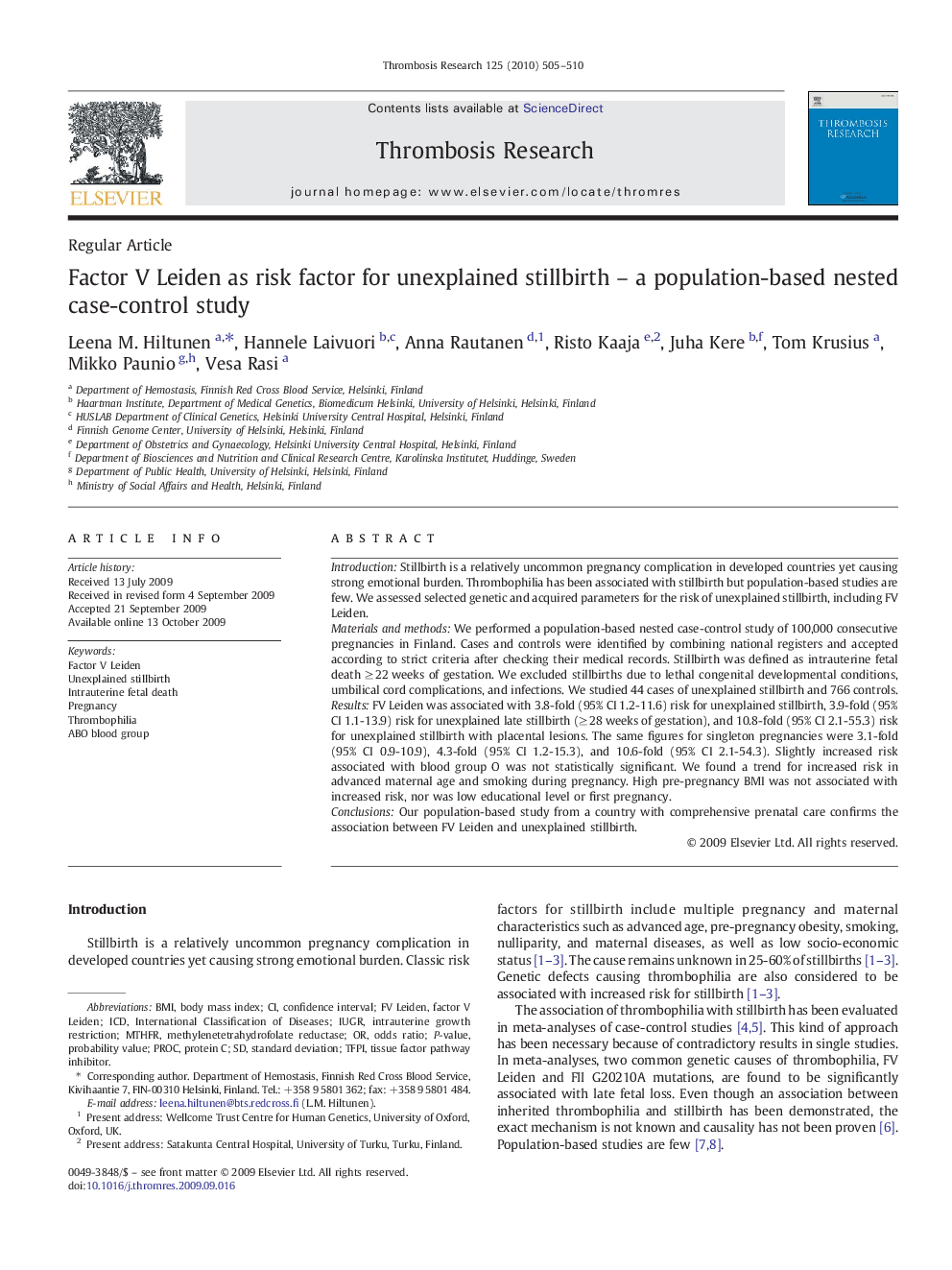| Article ID | Journal | Published Year | Pages | File Type |
|---|---|---|---|---|
| 3027673 | Thrombosis Research | 2010 | 6 Pages |
IntroductionStillbirth is a relatively uncommon pregnancy complication in developed countries yet causing strong emotional burden. Thrombophilia has been associated with stillbirth but population-based studies are few. We assessed selected genetic and acquired parameters for the risk of unexplained stillbirth, including FV Leiden.Materials and methodsWe performed a population-based nested case-control study of 100,000 consecutive pregnancies in Finland. Cases and controls were identified by combining national registers and accepted according to strict criteria after checking their medical records. Stillbirth was defined as intrauterine fetal death ≥ 22 weeks of gestation. We excluded stillbirths due to lethal congenital developmental conditions, umbilical cord complications, and infections. We studied 44 cases of unexplained stillbirth and 766 controls.ResultsFV Leiden was associated with 3.8-fold (95% CI 1.2-11.6) risk for unexplained stillbirth, 3.9-fold (95% CI 1.1-13.9) risk for unexplained late stillbirth (≥ 28 weeks of gestation), and 10.8-fold (95% CI 2.1-55.3) risk for unexplained stillbirth with placental lesions. The same figures for singleton pregnancies were 3.1-fold (95% CI 0.9-10.9), 4.3-fold (95% CI 1.2-15.3), and 10.6-fold (95% CI 2.1-54.3). Slightly increased risk associated with blood group O was not statistically significant. We found a trend for increased risk in advanced maternal age and smoking during pregnancy. High pre-pregnancy BMI was not associated with increased risk, nor was low educational level or first pregnancy.ConclusionsOur population-based study from a country with comprehensive prenatal care confirms the association between FV Leiden and unexplained stillbirth.
